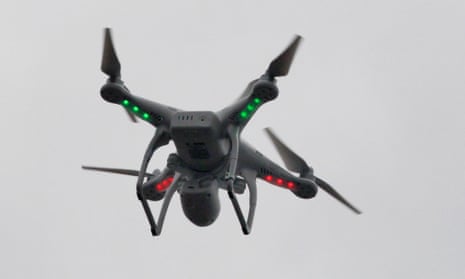Daredevil videos shot using GoPro’s range of wearable cameras are increasingly popular on YouTube, but now the company is reportedly working on another way to capture startling footage: drones.
GoPro will launch its first consumer drones late in 2015, according to the Wall Street Journal, which suggested that the company may undercut established firms in that market by pricing its devices at between $500 and $1,000.
Several of those rivals already support GoPro in their existing drones, which can be customised to carry its cameras and shoot video from the air.
Making consumer drones more affordable – a trend that will go beyond GoPro – will ensure more of them are buzzing through the skies. Which, in turn, may provide a growing headache for aviation authorities concerned at the risks to planes.
News of GoPro’s plans came as the US Federal Aviation Administration (FAA) released records showing that since 1 June 2014, there have been 25 separate examples of small drones involved in “near mid-air collisions” incidents with planes and helicopters in the US.
The incidents, published by the Washington Post, include a drone coming within 10 feet of the left wing of a Boeing 737 arriving in New York; several flights reporting drones coming within 100 feet while flying at heights of 3,000 or 4,000 feet; and a drone flying circles around a police helicopter in New York, resulting in the apprehension of its operator on the ground.
The release of the incident reports came as the FAA and other aviation authorities are mulling changes to legislation on how and where drones can be flown, whether owned by individuals, or operated by companies.
In the US, personal drones can be flown at up to 400 feet, as long as they are not within five miles of an airport or other restricted areas, notes the Post, which adds that more than 500,000 small drones have been sold in the US alone in the last three years.
A separate investigation by the Washington Post earlier in 2014 found that more than 400 large US military drones had crashed around the world in the past 13 years, including collisions with homes, runways, and one air force transport plane in midair.
Drones are also causing regulators to consider their impact on privacy. Earlier in November, the UK’s Information Commissioner’s Office (ICO) issued new guidance on the operation of drones, stressing that their operators should alert people before recording them, plan their flights in advance, and always keen their drones in sight.





Comments (…)
Sign in or create your Guardian account to join the discussion